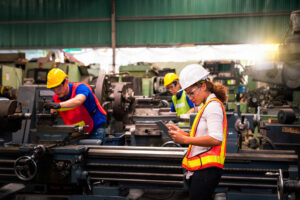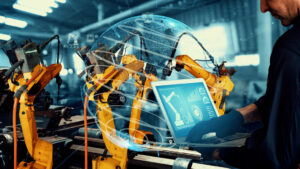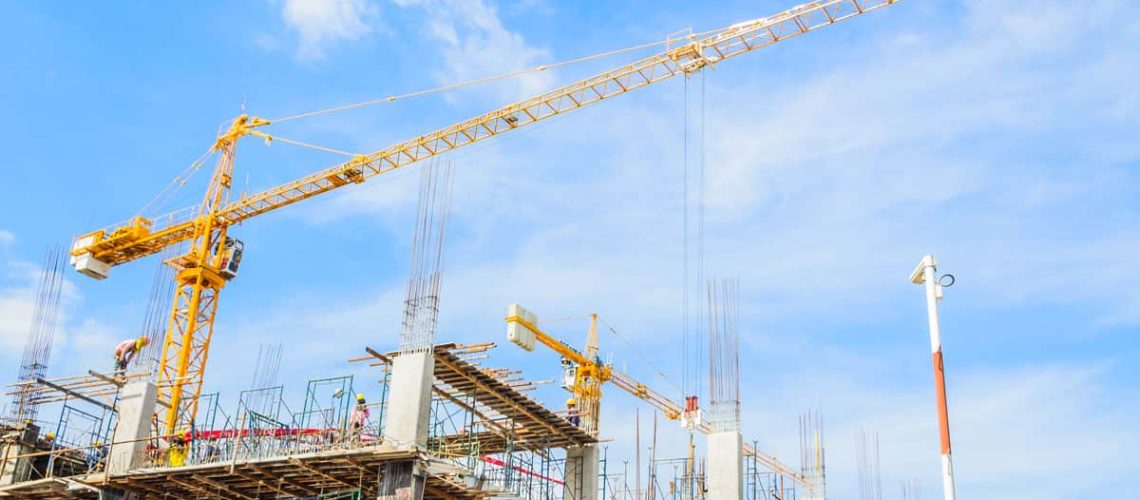Construction technology has radically changed the construction industry since the days when construction workers were limited to manual labor with hand tools. With the advent of new technologies, construction workers are now able to work more efficiently and safely while completing projects more quickly.
The tools that workers use, the methods they employ and the materials they work with have all undergone huge changes, and any decent building construction contractor will be employing them. But how did we get to where we are now? Let’s take a look at the history of construction technology and how it has developed over the years.
Early Advancements In Construction Technology
 The first major advancement in construction technology came with the invention of the steam engine in the late eighteenth century. The steam engine allowed for the development of powered excavators and other heavy machinery, which greatly increased the productivity of construction workers.
The first major advancement in construction technology came with the invention of the steam engine in the late eighteenth century. The steam engine allowed for the development of powered excavators and other heavy machinery, which greatly increased the productivity of construction workers.
The next big advancement came with the advent of reinforced concrete in the nineteenth century. Reinforced concrete is a material that is much stronger than traditional concrete, and it allowed for the construction of taller and more complex structures.
In the early twentieth century, construction workers began to use electric power tools, which made their jobs easier and quicker. This led to an increase in the number of high-rise buildings being constructed.
Modern-Day Advancements In Construction Technology
The Obvious
Modern machinery like excavators, bulldozers, and cranes have made construction work easier and faster than ever before. Construction workers can now move large amounts of earth and materials quickly and efficiently. Additionally, (for the time) innovative materials like steel and glass have made it possible to create more innovative and aesthetically pleasing buildings.
Software
 Digital technology has greatly improved the construction industry. Computer-aided design (CAD) software has allowed architects to create more detailed and accurate drawings of their proposed buildings. This software also helps builders to plan and track the progress of construction projects.
Digital technology has greatly improved the construction industry. Computer-aided design (CAD) software has allowed architects to create more detailed and accurate drawings of their proposed buildings. This software also helps builders to plan and track the progress of construction projects.
Building Information Modeling (BIM) is another type of computer software that is used in the construction industry. BIM allows architects, builders, and engineers to collaborate on a construction project using a 3D model. This helps to ensure that all members of the team are working towards the same goal.
Workforce management software has also greatly helped the construction industry to become more efficient. This type of software enables construction companies to track the hours worked by their employees and to monitor the progress of projects.
Offsite Construction
 Today, there’s no need to complete all construction work on the official construction site. Construction companies are now using prefabricated modules to build entire structures offsite. This construction method is known as offsite construction or modular construction and greatly reduces the amount of time required to complete a project.
Today, there’s no need to complete all construction work on the official construction site. Construction companies are now using prefabricated modules to build entire structures offsite. This construction method is known as offsite construction or modular construction and greatly reduces the amount of time required to complete a project.
There are many benefits to using offsite construction, including:
- Reduced waste and pollution: Modular construction results in less waste than traditional construction methods. And since the work is done in a factory setting, there is no need for heavy equipment on site. This reduces noise and air pollution.
- Reduced labour costs: The use of prefabricated modules means that less skilled laborers are needed on the job site. This leads to reduced labor construction costs.
- Shorter build times: Offsite construction can be completed up to 50% faster than the conventional method of development on construction sites.
Construction Management
The use of computers has not only affected the design of buildings, but also how they are constructed. Construction management software can help construction crews to stay organized and on schedule. This software also allows supervisors to track the progress of a project as it is being built.
Artificial Intelligence (AI) & Machine Learning
 The construction industry is starting to experiment with the use of AI and machine learning.
The construction industry is starting to experiment with the use of AI and machine learning.
For example, construction firms are using these technologies to develop predictive maintenance models that can help identify issues with construction equipment before they become a problem.
Conclusion
Construction industry trends is all about making use of modern technology, and consequently it has come a long way in the last few hundred years. What was once a slow and labor-intensive construction process is now much quicker and easier thanks to advances in machinery and materials. This has had a huge impact on the construction industry, making it possible to build taller, more complex structures in a fraction of the time.
As technology continues to evolve, we can expect to see even more changes in the years to come.






